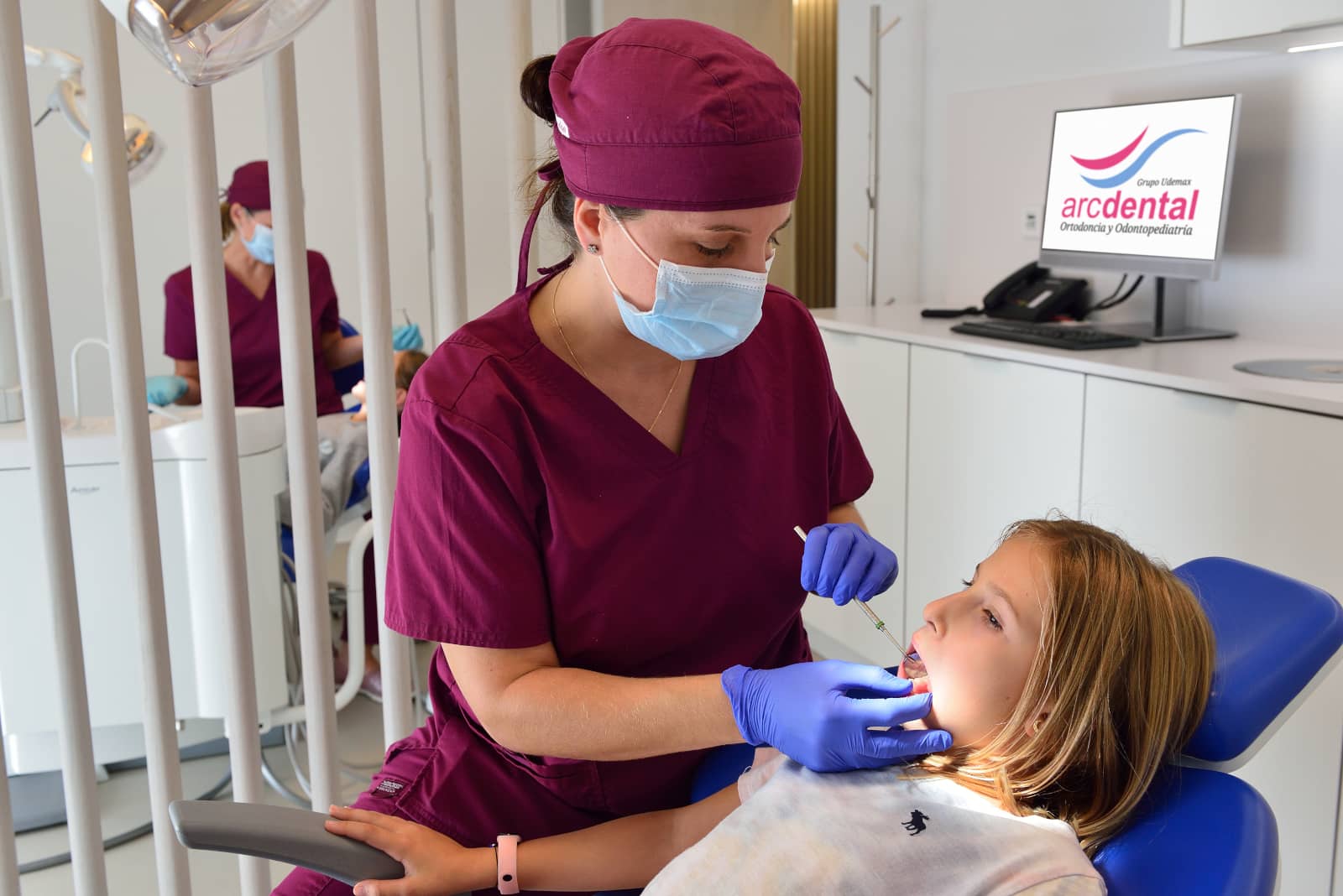Caries treatment for children and babies in Palma
Preventing the onset of tooth decay and treating it early is essential for dental development.
Tooth care for children and adolescents
Caries is the most common chronic childhood disease and is easily preventable. Nevertheless, even today, small patients affected by this pathology still come to the doctor’s surgery. The fact is that primary teeth, i.e. milk teeth, are much more prone to this problem.
In addition, the fact that children suffer a greater number of traumatisms due to their daily activity contributes to weakening their teeth, making them more susceptible.
Do you want to treat your children’s tooth decay?

Why does tooth decay occur?
Tooth decay is an infectious process of the tooth, a destructive bacterial disease of dental structures caused by a series of micro-organisms that live in the mouth. These bacteria feed on the sugars present in the oral cavity after ingestion of food and drink, producing a corrosive substance that causes tooth decay. It is worth mentioning that caries tends to be more aggressive in milk teeth, especially in patients under 3 years of age (baby bottle caries).
In any case, it is essential for children to have a balanced diet and for parents to carry out and/or supervise their oral hygiene according to their age. However, it is worth mentioning that check-ups with the paediatric dentist, at least from the age of two if not earlier, are essential for the prevention and early detection of any pathology in general and caries in particular.
How do you know if your child has tooth decay?
As usual, children (especially younger children) will not be aware of an oral problem unless parents are vigilant. However, despite the attention that many parents devote to it, caries is still one of the most difficult pathologies to detect without the appropriate equipment. What can its appearance in children indicate?
- Inflammation of the gums and bleeding when brushing: these can also indicate the existence of caries as well as a periodontal problem.
- The presence of pain when chewing: although this does not occur in all cases, the child may experience discomfort or tooth sensitivity if there is caries.
- Regular check-ups: given the complexity of detecting the existence of childhood caries, regular check-ups with the dentist are key.
How is tooth decay treated?
As we have already mentioned, the most effective way to detect and even prevent caries in children and adolescents is through regular check-ups and oral cleanings by hygienists specialised in children’s oral care. On the other hand, there are coadjuvant techniques that can prevent the appearance of caries in specific cases, as well as other treatments that help to eliminate the problem.






